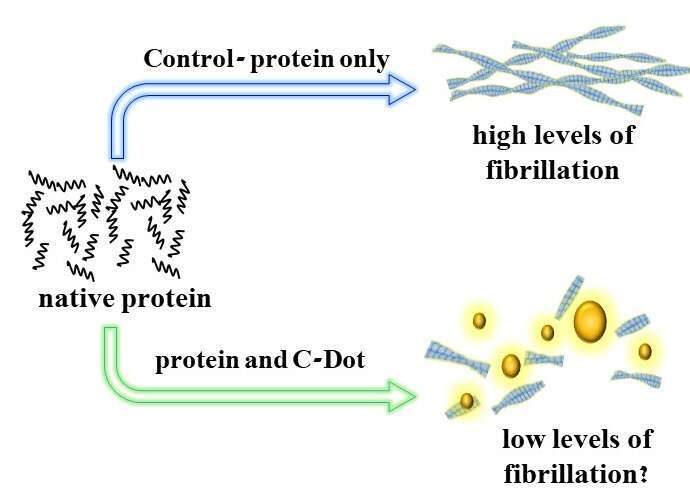
Amino acid based carbon dots influence on amyloid aggregation
2The Ilse Katz Institute for Nanoscale Science and Technology, Ben-Gurion University of the Negev, Beer-Sheva, Israel
Many human diseases are associated with misfolding, aggregation and fibril formation of different proteins. For example, amyloid-β in Alzheimer’s disease, α-synuclein in Parkinson`s disease and IAPP in type 2 diabetes are caused by the formation of an insoluble, rich β sheet fibrils of the different proteins.1 it is suggested that the presence of metal ions can promote the aggregation of the different amyloids.
Polyphenols are a group of small molecules containing aromatic phenolic rings.1,2 The use of polyphenols for the inhibition of amyloid aggregation has been extensively studied and it was suggested that polyphenols can interact with amyloid fibrils, delay and interfere with the fibril formation by aromatic interactions.2
A new approach for the amyloid aggregation inhibition is the use of carbon dots (C dots) are carbon-based Nano partials with a graphite-based core and an outer layer having functional groups originated from their building blocks reactants. The C dots are of great interest due to their size (<10nm), their fluorescence emission, biocompatibility, and low toxicity.3Recently it was discovered by Jelinek`s lab that L-Lys based C dots can interfere with the aggregation of Prion.3
This study shows that C dots synthesized from a variety of amino acids influence the IAPP aggregation in different ways in terms of kinetics, and morphology and secondary structure of the fibrils under the presence and absence of the C-Dots.

- Ngoungoure, V. L. N., Schluesener, J. & Paul, F. Natural polyphenols binding to amyloid : A broad class of compounds to treat different human amyloid diseases. Mol. Nutr. food Res. 8–20 (2015). doi:10.1002/mnfr.201400290
- Porat, Y., Abramowitz, A. & Gazit, E. Inhibition of amyloid fibril formation by polyphenols: Structural similarity and aromatic interactions as a common inhibition mechanism. Chem. Biol. Drug Des. 67, 27–37 (2006).
- Arad, E. & Bhunia, S. K. Lysine-Derived Carbon Dots for Chiral Inhibition of Prion Peptide Fibril Assembly. Adv. Ther. 1800006, 1–8 DOI:10.1002/adtp.201800006 (2018).
Powered by Eventact EMS